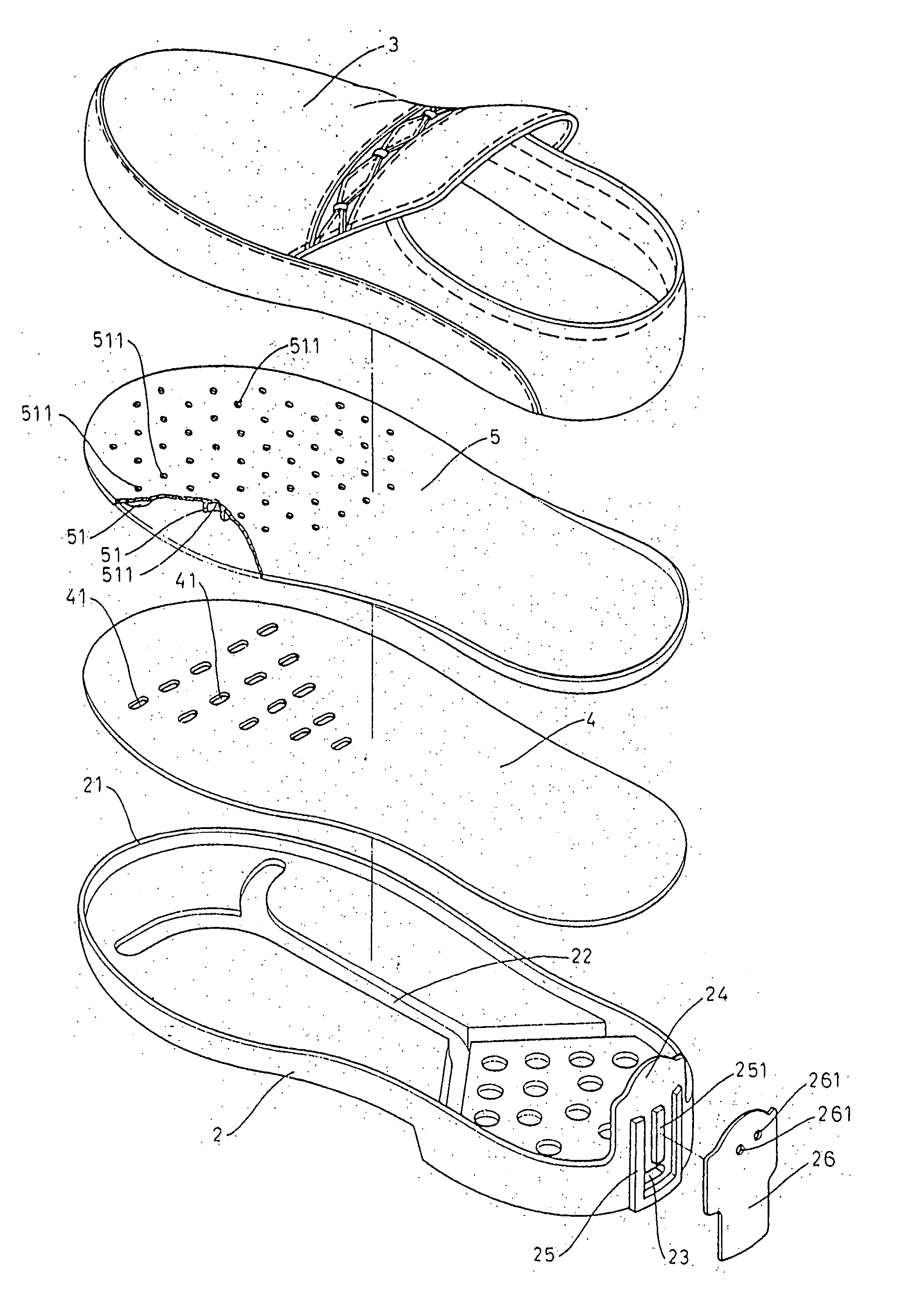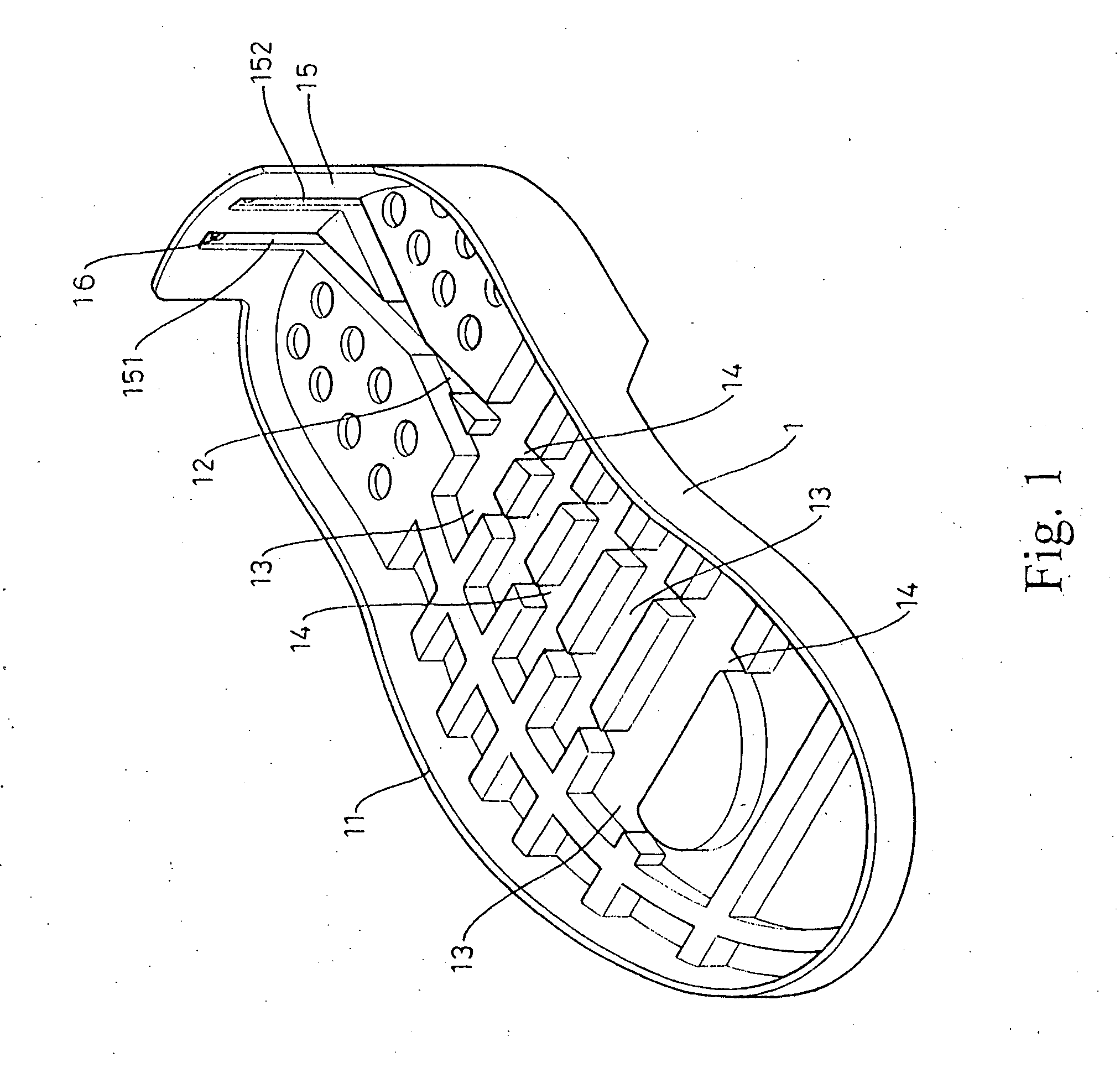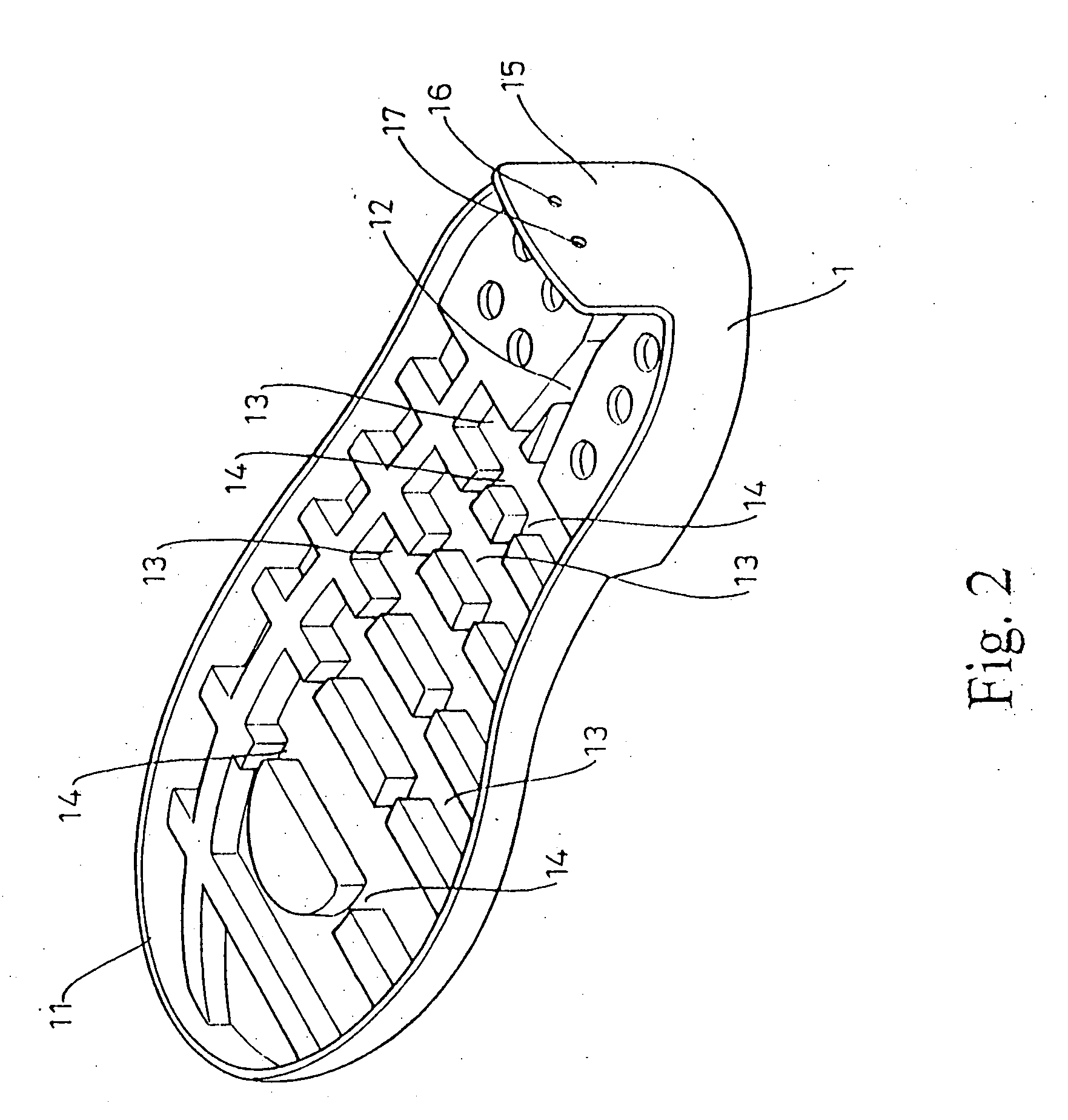Air-ventilating shoe sole
- Summary
- Abstract
- Description
- Claims
- Application Information
AI Technical Summary
Benefits of technology
Problems solved by technology
Method used
Image
Examples
Embodiment Construction
[0018] The various objects and advantages of the present invention will be more readily understood from the following detailed description when read in conjunction with the appended drawings.
[0019] Referring to FIGS. 1 and 2, the shoe sole 1 of the present invention is bounded by a short wall portion 11 for attaching a shoe body. The upper surface of the heel portion of the shoe sole 1 is provided with an X-shaped groove 12. The upper surface of the palm and arch portions of the shoe sole 1 are provided with a plurality of transverse recesses 13 for passing air. The structures within the shoe sole 1 are integrally formed with the shoe sole 1. The transverse recesses 13 are crossed by a couple of main passages 14 extending from one end of the X-shaped groove 12. Thereby, when a top is placed on the shoe sole 1, the X-shaped groove 12 , the transverse recesses 13 and the main passages 14 form a plurality of connected passages for ventilating air.
[0020] Referring to FIG. 3, a flange ...
PUM
 Login to View More
Login to View More Abstract
Description
Claims
Application Information
 Login to View More
Login to View More - R&D
- Intellectual Property
- Life Sciences
- Materials
- Tech Scout
- Unparalleled Data Quality
- Higher Quality Content
- 60% Fewer Hallucinations
Browse by: Latest US Patents, China's latest patents, Technical Efficacy Thesaurus, Application Domain, Technology Topic, Popular Technical Reports.
© 2025 PatSnap. All rights reserved.Legal|Privacy policy|Modern Slavery Act Transparency Statement|Sitemap|About US| Contact US: help@patsnap.com



